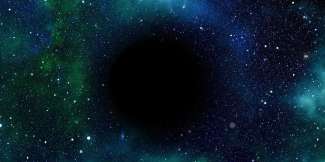Phys.org news

Phys.org / Astronomers build molecular cloud atlas for nearby Andromeda galaxy
Astronomers from Cardiff University, UK, have employed the Combined Array for Research in Millimeter-wave Astronomy (CARMA) to explore the nearby Andromeda galaxy. Results of the observational campaign, published December ...

Phys.org / Why we trust romantic partners rather than AI when making big financial decisions
Artificial intelligence programs are not only helping us tackle complex challenges like diagnosing diseases and predicting weather patterns, but also assisting with more mundane matters such as correcting grammar and planning ...

Phys.org / Blazar Ton 599's complex variability investigated by long-term observations
Using the Whole Earth Blazar Telescope (WEBT), an international team of astronomers have performed long-term photometric observations of a luminous blazar known as Ton 599. Results of the observations, published in the Astronomy ...

Phys.org / The book only gets 3 stars... but is considered great literature
A new study from Aarhus University shows that star ratings of books are not always accurate. Average ratings on Goodreads can hide both literary classics and highly divided reading experiences—and can therefore be a misleading ...

Phys.org / AMOC collapse simulations reveal what could happen to the ocean's carbon
The Atlantic Meridional Overturning Circulation (AMOC) is the system of currents responsible for shuttling warm water northward and colder, denser water to the south. This "conveyor belt" process helps redistribute heat, ...

Phys.org / New framework unifies space and time in quantum systems
Quantum mechanics and relativity are the two pillars of modern physics. However, for over a century, their treatment of space and time has remained fundamentally disconnected. Relativity unifies space and time into a single ...

Phys.org / New census of sun's neighbors reveals best potential real estate for life
A new study led by a Georgia State University astronomy graduate student is a major step forward in the search for stars that could host Earth-like planets that may prove to be good havens for life to develop. Sebastián ...

Phys.org / Twitter data reveals partisan divide in understanding why pollen season's getting worse
Two things are clear from a University of Michigan analysis of nearly 200,000 Twitter posts between 2012 and 2022. One, people are really good at identifying peak pollen season: The largest volume of tweets about pollen often ...

Phys.org / Black hole shreds distant 'super sun,' unleashing a spectacular event known as the Whippet
A black hole has shredded a massive star like it was "preparing a snack for lunch," according to a team of scientists at the American Astronomical Society's annual meeting (5–8 January).

Phys.org / Catalyst behavior that could cut emissions and stabilize supply of everyday materials revealed
A Rice University-led team has unveiled how tiny molecular structures on industrial catalysts behave during the manufacture of vinyl acetate monomer (VAM), a core ingredient in adhesives, paints, coatings, packaging, textiles ...

Phys.org / Webb telescope sheds light on ancient 'monster stars' that may reveal the birth of black holes
Using data from NASA's James Webb Space Telescope, astronomers from the Center for Astrophysics | Harvard & Smithsonian (CfA) have revealed the universe's most mysterious distant objects, known as little red dots, may actually ...

Phys.org / Webb finds early-universe analog's unexpected talent for making dust
Using NASA's James Webb Space Telescope, astronomers have spotted two rare kinds of dust in the dwarf galaxy Sextans A, one of the most chemically primitive galaxies near the Milky Way.